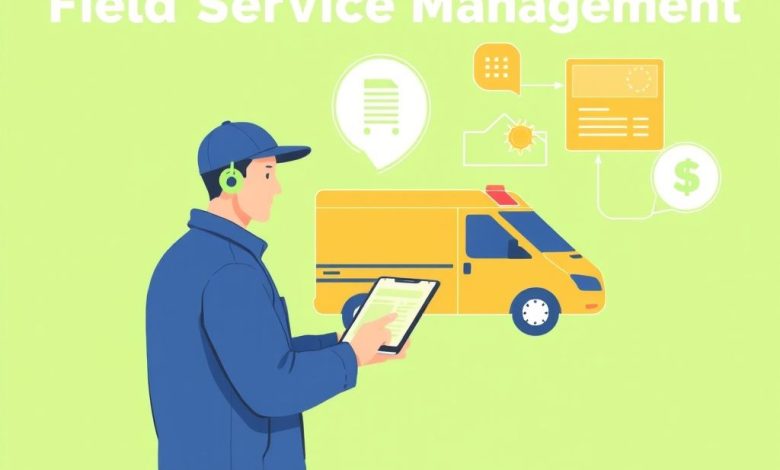Field Service Management with Auto-Dispatch After Alert

Introduction
Field Service Management (FSM) is a critical component of modern business operations, particularly in industries such as HVAC, electrical work, plumbing, and home maintenance. As companies strive to provide efficient and cost-effective services, the need for advanced FSM solutions has grown exponentially. One innovative approach that has gained significant attention in recent years is Auto-Dispatch After Alert technology.
Auto-Dispatch After Alert systems integrate real-time data from various sources to optimize field service scheduling and response times. This technology revolutionizes how businesses manage their field operations, ensuring faster turnaround times, improved customer satisfaction, and increased operational efficiency.
In this article, we will explore the concept of Auto-Dispatch After Alert in Field Service Management, its benefits, implementation strategies, and best practices for successful integration.
The Evolution of Field Service Management
Field Service Management has undergone significant transformations over the past decade. From traditional paper-based scheduling systems to cutting-edge digital platforms, the industry has embraced technological advancements to streamline operations.
Key developments in FSM include:
- Mobile workforce management apps
- Real-time tracking and monitoring
- Automated scheduling algorithms
- Customer self-service portals
- Integration with IoT devices
These innovations have collectively contributed to more efficient and responsive field service operations.
Understanding Auto-Dispatch After Alert
Auto-Dispatch After Alert is a sophisticated feature within Field Service Management software that automates the dispatching process based on real-time alerts and notifications. This system proactively identifies potential issues and assigns appropriate resources before customers even reach out for assistance.
The key components of Auto-Dispatch After Alert include:
- Real-time alert generation: Based on sensor data, weather updates, equipment performance, and other factors.
- AI-powered prioritization: Automatically categorizing alerts based on urgency and impact.
- Dynamic resource allocation: Assigning the most suitable technician to each alert.
- Automated communication: Sending proactive notifications to customers and technicians.
Benefits of Auto-Dispatch After Alert
Implementing Auto-Dispatch After Alert technology in Field Service Management offers numerous advantages:
Improved Response Times
By identifying potential issues before they escalate, Auto-Dispatch After Alert significantly reduces response times. This leads to higher customer satisfaction and reduced downtime for both customers and technicians.
Enhanced Operational Efficiency
Automated dispatching eliminates manual errors and reduces the time spent on scheduling. This allows field service managers to focus on strategic decision-making and optimizing overall operations.
Increased Customer Satisfaction
Proactive communication and timely resolutions contribute to higher customer satisfaction scores. Customers appreciate the transparency and efficiency demonstrated by field service providers.
Cost Reduction
By minimizing unnecessary dispatches and reducing travel times, Auto-Dispatch After Alert helps reduce operational costs associated with field service operations.
Implementation Strategies
Successfully integrating Auto-Dispatch After Alert into existing Field Service Management systems requires careful planning and execution. Here are some key considerations:
- Data Integration: Ensure seamless integration with existing CRM, ERP, and IoT systems.
- Training: Provide comprehensive training for all staff members involved in the dispatch process.
- Phased Implementation: Roll out the technology gradually across different regions or teams.
- Performance Monitoring: Set up metrics to measure the impact of Auto-Dispatch After Alert on response times and operational efficiency.
- Continuous Improvement: Regularly review and refine the system based on feedback and performance data.
Best Practices for Successful Integration
To maximize the benefits of Auto-Dispatch After Alert in Field Service Management, consider the following best practices:
- Standardize Work Orders: Ensure consistent formatting and details in work orders to facilitate efficient processing.
- Technician Profiling: Create detailed profiles for each technician, including skills, equipment familiarity, and geographical preferences.
- Regular System Updates: Keep the software updated to benefit from the latest improvements and bug fixes.
- Customer Communication Guidelines: Develop clear protocols for proactive communication with customers during the dispatch process.
- Performance Tracking: Implement robust reporting mechanisms to monitor the effectiveness of Auto-Dispatch After Alert.
Challenges and Limitations
While Auto-Dispatch After Alert offers numerous advantages, there are potential challenges to consider:
- Data Accuracy: Ensuring the reliability of real-time data sources is crucial for effective decision-making.
- Technological Dependence: Overreliance on automated systems may lead to reduced human judgment in critical situations.
- Initial Investment: Implementing advanced FSM solutions often requires significant upfront costs.
- Integration Complexity: Seamless integration with existing systems can be challenging and time-consuming.
- Privacy Concerns: Handling customer data requires strict adherence to privacy regulations.
Conclusion
Field Service Management with Auto-Dispatch After Alert represents a significant leap forward in operational efficiency and customer satisfaction. By leveraging real-time data and AI-powered algorithms, businesses can streamline their field service operations, reduce response times, and improve overall performance.
As technology continues to evolve, it’s crucial for field service managers to stay ahead of the curve by embracing innovative solutions like Auto-Dispatch After Alert. By doing so, they can ensure their companies remain competitive in an increasingly digital landscape while maintaining high standards of customer service.
The future of Field Service Management is undoubtedly technology-driven, and Auto-Dispatch After Alert stands as a prime example of how advanced automation can transform traditional field service operations into efficient, responsive, and customer-centric enterprises.




